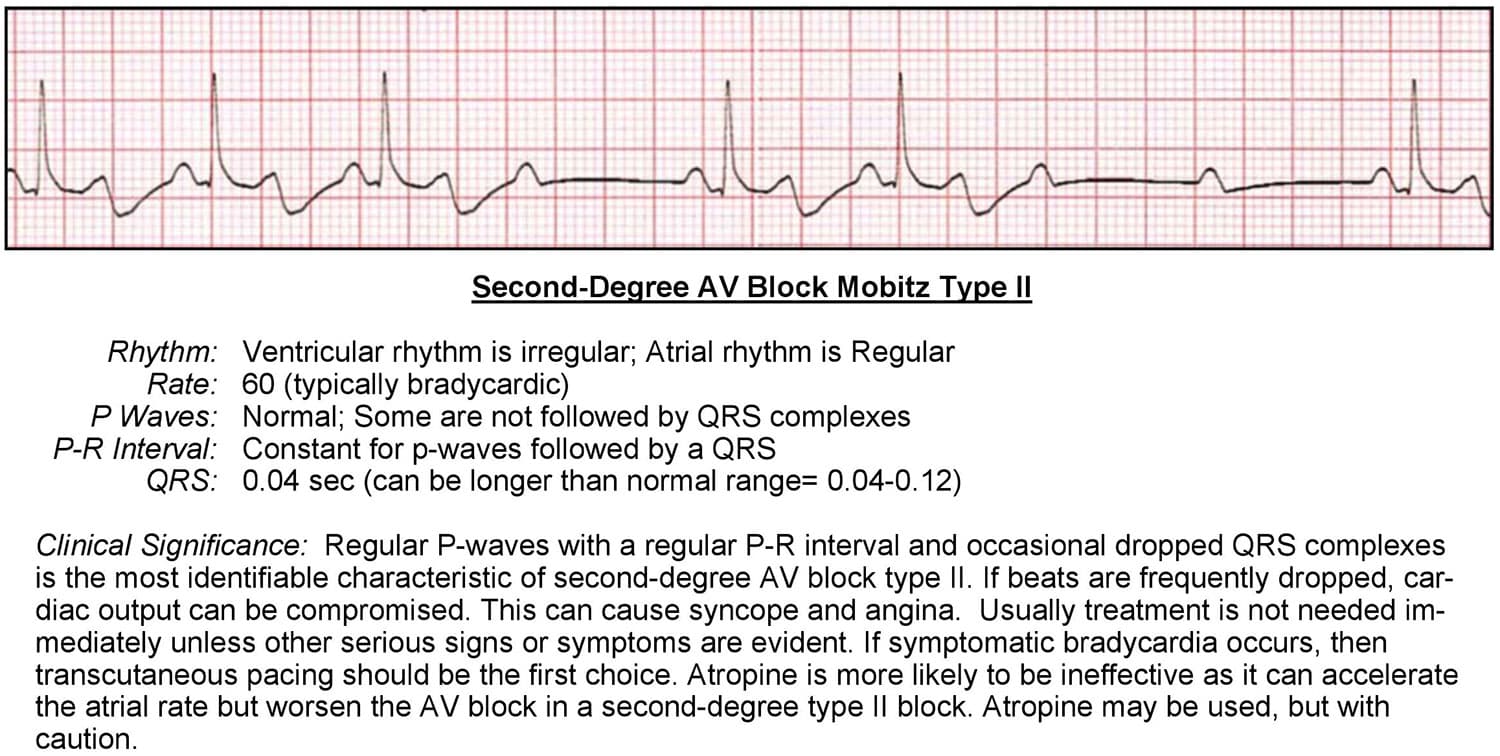Which Type of Atrioventricular Block Best Describes This Rhythm
She rates her discomfort an 8 on a O to 10 scale. Pericardium is a type of serous membrane that produces serous fluid to lubricate the heart and prevent friction between the ever beating heart and its surrounding organs.
A comprehensive database of more than 44 cardiovascular system quizzes online test your knowledge with cardiovascular system quiz questions.

. A patient is in refractory ventricular fibrillation. Atrial fibrillation Question 13 Explanation. Immediate management Of this patient should include.
Normally there is a P wave that precedes each QRS complex by a fixed PR interval of 120 to 200 milliseconds. The most common types of supraventricular tachycardia are caused by a reentry phenomenon producing accelerated heart rates. These include atrial bradyarrhythmias atrial tachyarrhythmias and sometimes bradycardia alternating with tachycardia often referred to as.
AV block represents a delay or disturbance in the transmission of an impulse from the atria to the ventricles. Cardiac Rhythm and Conduction Abnormalities. The patient is intubated and an IV has been started.
Like second-degree type II this severe type of atrioventricular block requires pacemaker implantation. Epinephrine 1 mg IVIO. Given the proposed amendments to DC 7015 the note that.
Asymptomatic first-degree atrioventricular AV block was observed as an adverse reaction in 04 4944 of patients randomized to receive VIMPAT and 0 0364 of patients randomized to receive placebo. Our online cardiovascular system trivia quizzes can be adapted to suit your requirements for taking some of the top cardiovascular system quizzes. Besides lubrication the pericardium serves to hold the heart in position and maintain a hollow space for the heart to expand into when it is full.
Dopamine 2 to 20 mcgkg per minute IVIO Atropine 1 mg IVIO Epinephrine 1 mg IVIO Atropine 05 mg IVIO. Atrioventricular AV conduction is evaluated by assessing the relationship between the P waves and QRS complexes. An ECG reveals an absence of P-waves and an irregular rhythm.
As a result P-waves. 2nd-degree heart block B. Her blood pressure is 12672 respirations 14.
One case of profound bradycardia was observed in a patient during a 15-minute infusion of 150 mg. The rhythm is asystole. This type of atrial fibrillation is continuous and lasts longer than 12 months.
Oxygen has been applied an IV has been started and the cardiac monitor reveals the rhythm below. Symptoms may include palpitations pulsation in the neck chest pain. Sick sinus syndrome also known as sinus node dysfunction SND is a disorder of the sinoatrial SA node caused by impaired pacemaker function and impulse transmission producing a constellation of abnormal rhythms.
In atrial fibrillation the atria no longer conduct electricity from the sinoatrial node in an orderly fashion. High-quality CPR is in. With this type of atrial fibrillation the heart rhythm doesnt go back to normal on its own.
Based on this treatment VA proposes to evaluate the non-benign categories of atrioventricular block second-degree type II and third-degree under DC 7018 implantable cardiac pacemakers. If a person has A-fib symptoms cardioversion or treatment with medications may be used to restore and maintain a normal heart rhythm. Second-degree atrioventricular block Mobitz I Wenckebach.
The patient describes her discomfort as a squeezing sensation in the middle Of her chest. Which of the following is the most likely diagnosis. What is the first drugdose to administer.
1st-degree heart block C. The pericardium has 2 layersa visceral layer that.



Comments
Post a Comment